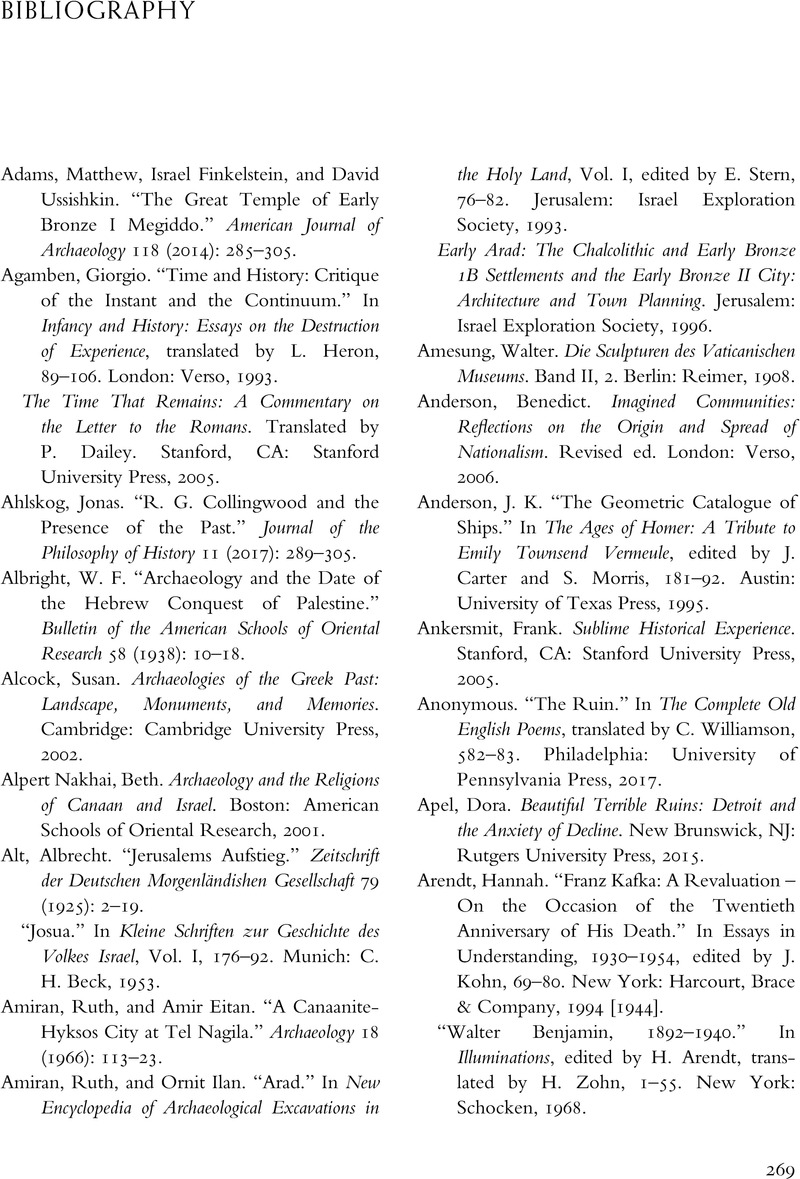Book contents
- The Bible Among Ruins
- The Bible Among Ruins
- Copyright page
- Dedication
- Contents
- Figures
- Preface
- Acknowledgments
- Introduction
- One On Ruins, Then and Now
- Two Shiloh and the Ruins of Memory
- Three The Ruins of Rachel’s Tomb and the Presence of the Past
- Four Jerusalem and the Ruins of Tomorrow
- Conclusion
- Bibliography
- Subject Index
- Scripture Index
- References
Bibliography
Published online by Cambridge University Press: 11 October 2023
- The Bible Among Ruins
- The Bible Among Ruins
- Copyright page
- Dedication
- Contents
- Figures
- Preface
- Acknowledgments
- Introduction
- One On Ruins, Then and Now
- Two Shiloh and the Ruins of Memory
- Three The Ruins of Rachel’s Tomb and the Presence of the Past
- Four Jerusalem and the Ruins of Tomorrow
- Conclusion
- Bibliography
- Subject Index
- Scripture Index
- References
Summary

- Type
- Chapter
- Information
- The Bible Among RuinsTime, Material Remains, and the World of the Biblical Writers, pp. 269 - 300Publisher: Cambridge University PressPrint publication year: 2023

